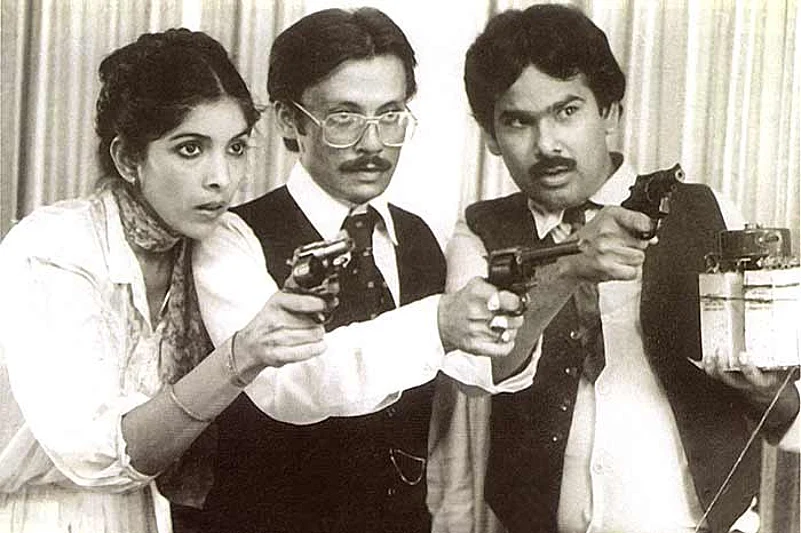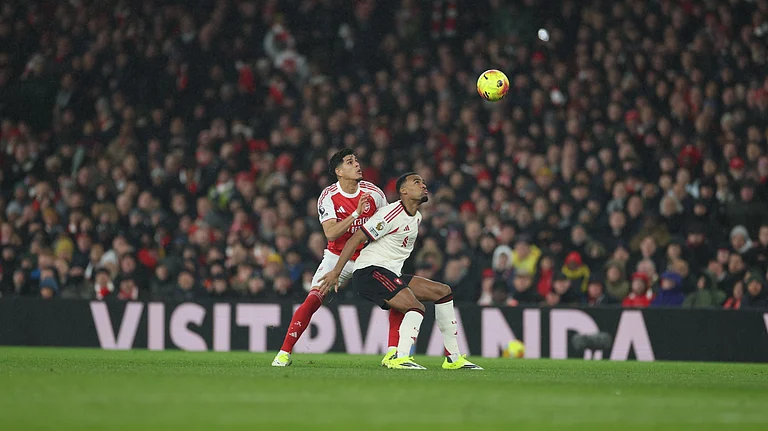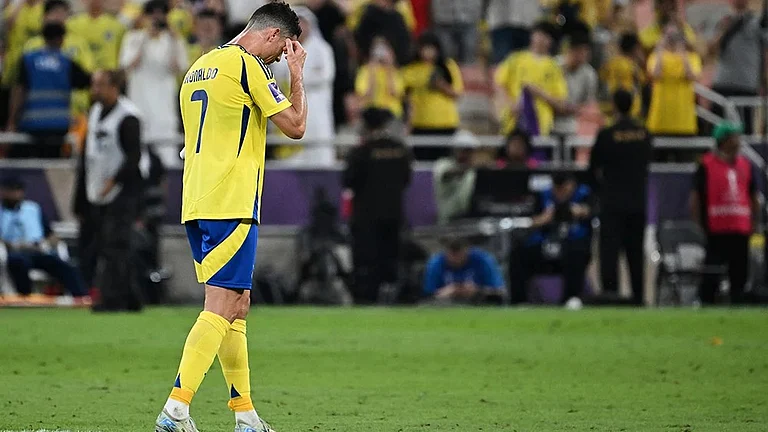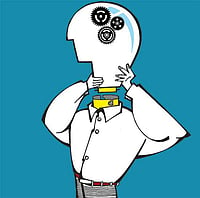Cut 2 cut
Docu maker Miriam Chandy’s list of must-watch documentaries
- Anand Patwardhan Ram Ke Naam
- Deepa Dhanraj Something Like a War
- Faiza Khan Malegaon Ke Supermen
- Supriyo Sen Wagah
- Zana Briski and Ross Kauffman Born into Brothels
- Simon Chambers Cowboys In India
***
The Present:
When I sat down to write this article, I didn’t know it was going to be so difficult. I was suddenly struck by the fact that I was almost being asked to write a tribute to something that had died. It’s almost like saying that socialism is dead! But is it? It’s alive in women’s rights, in patent laws, in eight-hour workdays, in copyright. That’s socialism and not in the hysterical views of idiots who think it means the government should run hotels and who still haven’t got the news that Stalin was a mass murderer.
It’s the same with parallel cinema. I see its impact on many young filmmakers working today, even in the mainstream. In the work of Vishal Bhardwaj, Anurag Kashyap, Vikram Motwane, Dibakar Banerjee, Imtiaz Ali, Madhur Bhandarkar, Zoya and Farhan Akhtar and, yes, Raju Hirani. I see it in the selection of subject matter, in the way they use actors, in their ability to make locations become almost a character of their films. When you see the Munnabhai series, don’t you think of Jaane Bhi Do Yaaro? Vishal’s films have some resonance of the work of Shyam Benegal, don’t they? And isn’t Anurag Kashyap another one of us? Let me clarify in case someone misunderstands what I am saying and begins tweeting about it. I am not saying that any of these filmmakers is imitative. Just that they have imbibed the best traditions of parallel cinema and then gone on to make extremely individualistic films.
And yes, don’t the stunning talent of Naseeruddin Shah, Shabana Azmi, Om Puri and Pankaj Kapur still attract the younger filmmakers, embolden them to write characters that they can play?
Flashback: Delhi 1979
The effect of the post-Emergency radicalism was still in the air. Politics and art were inextricably intertwined. There was a lot of posturing but also some great work. The US film industry and the Indian government were at loggerheads and for some years very few Hollywood films were released. This opened the door for filmmakers like Shyam Benegal to find exhibition outlets for their films. Suddenly we were exposed to another kind of Indian cinema. A film like Nishant came to a theatre near us with its extremely nuanced view of Indian reality. The stranglehold of a decaying and decadent feudalism in Gandhi’s real India. It was a complex reality and the ability of Shyam to understand and dissect even the supposed villains of that reality reminded me of the work of his cousin Guru Dutt’s classic Sahib Biwi Aur Ghulam. The other work of Shyam that affected a lot of us was the luminous Bhumika. The journey of a female actor’s life was told with an amazing candour and sympathy without ever descending into maudlin sentimentality.
Not everybody, though, shared my view of Shyam. In fact, disagreement over matters of art was the essence of those times. If one has to draw a political analogy, then the work of Shyam Benegal occupied the centre-left space in the parallel cinema movement and the film institute boys occupied the far left space. Their icons were Mani Kaul and Kumar Shahani. This was cinema divested of all its frills in its supposedly pure abstract form. It was a measure of the openness of those times that even these filmmakers had a place and an audience, however niche. Kaul’s slow- moving camera captured the essential human condition in a way rarely seen. The actors, stripped away from their usual habits, sometimes managed to catch a truth which conventional performances didn’t. Personally, for me a lot of times the conversation about the films was more interesting than the films themselves. But so what? Everybody does not have to like everything. The conflict of ideas generated by these films created questions in the head of audiences—and isn’t that the purpose of art? To create dissonance, to provide answers which have more questions and then to leave the audience to figure out the answer. The purpose is to create adult, questioning minds and not ostriches in search of happy endings. (An aside: Mani died recently. Was it worth it, Mani? )
All over the country, a kind of cinema was capturing a kind of audience. It’s important to remember that. In Bengal, Satyajit Ray always had an audience. The filmmakers who followed him were also iconic figures in their own land. Mrinal Sen at times escaped the ham-handed gimmickyness of his own style and made the brutal exposure of middle-class Bengal called Ek Din Pratidin. The story of a young woman who doesn’t return home one night and the drama that ensues was at times too statementish but extremely provocative. In Kerala, Adoor Gopalakrishnan and Aravindan were crafting films of amazing elegance. Adoor was more political, Aravindan a poet but their films had a cumulative impact that put Malayalam cinema on the world map.
Jump cut: two years on, 1981
I was in Mumbai and working on Vinod Chopra’s first feature, Sazaye Maut. Often people ask me about those days and I am stumped for an answer. It was not all wonderful in parallel cinema and there were enough frauds to fill a couple of public toilets, but the excitement was palpable. A new generation was bursting onto the scene and making films that attempted a conversation with a sometimes real, sometimes imagined audience. This is the post-Independence generation not willing to accept the legacy, in the form of the country, that had been passed on to them by their parents. What is the best story? According to the Persians, it is that which combines what we have seen with what has happened to us. All the films of that time, in a sense, reflect a kind of betrayal. Life seems full of possibilities and potential that seems to be constantly usurped and eroded. There is a lament in them for lives not allowed to be lived. The young Catholic of Saeed Mirza’s Albert Pinto Ko Gussa Kyon Aata Hai and the Dalit of Ketan Mehta’s Bhavani Bhavai feel the same anger. And there is a lot in common between the two photographers of Jaane Bhi Do Yaaro and the tortured cop of Ardha Satya despite the wildly different nature of the two films. There is a certain flair and elan in the films that attempts to break free from the shackles imposed by conventional story-telling. Life is lyrical, tragic, comic at the same time and the form tries to communicate that. Can anyone imagine Mirch Masala told any other way? Also women were claiming their space in these films and their refusal to behave according to set patterns created an amazing tension in these movies. In fact, if we look at the cinema of those times, this truth jumps out and hits one in the face. Just think of Shabana’s characters in Mrinal Sen’s Khandhar, Shekhar Kapur’s Masoom or Mahesh Bhatt’s Arth. Think of Smita Patil in Mirch Masala, Arth, Chakra and that forgotten gem, Jabbar Patel’s Subah. Think of Aparna Sen’s 36 Chowringhee Lane,Paroma.
Not that this cinema didn’t have its own congenital problems. The worst of them were vaguely socialistic and supposedly concerned with injustice and other such socially concerned terminology. These films were shoddy, had nothing to do with cinema and were so predictable that the viewer lost interest after the first shot. But when social concern met artistry and further interacted with poetry, then gems like Piravi, Uttaran, Khamosh and Bandit Queen are born.
Today, as I sit and I write this, I no longer feel the sadness that used to hit me when I used to think of those heady days. Today, a new set of mavericks have occupied the same space and are breaking new grounds. Technology has and will make unheard of changes and the day is not far off when a young filmmaker sitting in some obscure town of India will make a film that will stun the world. I really do feel extremely happy and excited to be alive and kicking in those times. It was worth it, Mani!

























